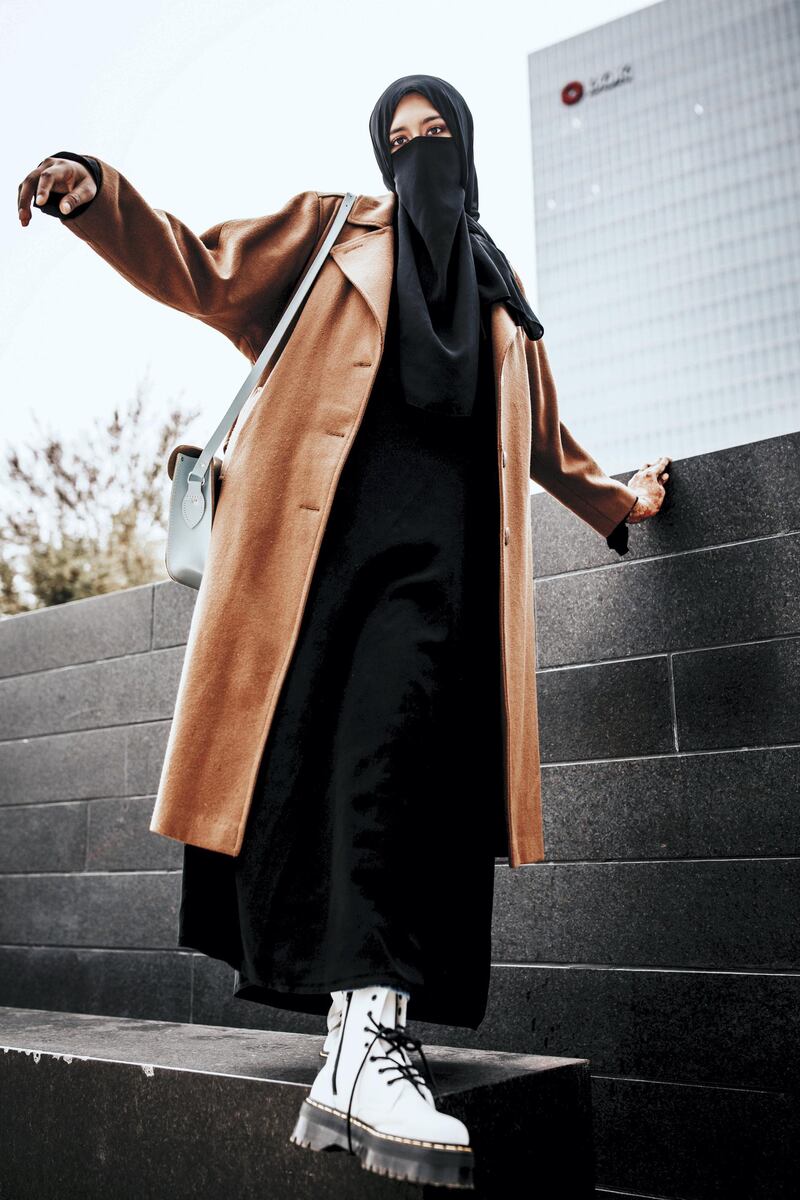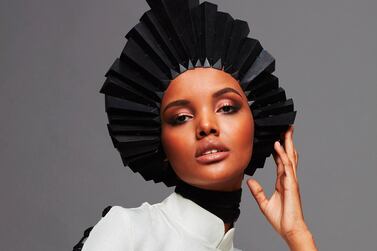Fashion bloggers specialising in the realm of modestwear have made their mark on social media over the past half-decade, and Muslim women have been at the forefront of the movement, proudly donning their hijabs with on-trend outfits. Now there's a new veil circulating on platforms such as Instagram – a garment that, previously, was unfairly reserved for stories about war, terrorism and oppression in the mainstream media: the niqab.
Niqab-wearing influencers are on the rise
This black piece of cloth, which shields a woman’s face from the rest of the world, leaving only her eyes visible, may seem like an unlikely idol to grace the feeds of Instagram, an app that’s infamous for bare-it-all selfies. However, a new crop of niqab-wearing influencers is proving that one can be both fully veiled and vehemently vocal on public platforms.
Are these women meek and repressed? Most certainly not. In fact, they’re unapologetically outspoken and working hard to combat the stereotypes that society defines them by.
Saudi Arabian Amy Roko (an online pseudonym) is exemplary of this new type of female influencer. The niqab-donning comedienne has more than one million followers on Instagram, where she frequently posts veiled selfies and funny videos. She also recently took part in a fashion shoot celebrating modern modesty for Saudi publication Destination KSA, and in one image Roko (the only one wearing a niqab) is pictured in the midst of five women, all dressed in colourful leather-esque skirts with bold abayas by Dubai label Bleach.
While spotting abayas and niqabs may be more common in the Middle East, Muslim women sporting face veils in the West are also rising through the social media ranks. Tune into @mamoii_, the Instagram feed of Trinidadian-American photographer and henna artist Shagoofa Ali, and, with the exception of her niqab, her outfit posts will look like those of any other trending modest-fashion blogger, complete with creative angles, urban spunk and millennial attitude.
Nonetheless, the niqab remains a controversial form of dress, even among Muslims. “Wearing niqab is not easily digested in the community,” says Ali. “Often women who decide to wear niqab are looked at as backwards, extreme or uneducated [even] by our peers.” She adds that, for her, the face veil “is a form of personal and spiritual growth”.
Aima Warriach, a 22-year-old niqab-wearing Canadian-Pakistani university student, echoes Ali's sentiments. "The same insecurities I deal with are what Muslim womxn [Warriach insists on using the feminist version of the word "women" to mark gender inclusivity] who don't wear hijab deal with," she says. "We're struggling with body image, our sexuality and the deen [religion]. Having to compete with each other, to see who the 'better' Muslim is, is exhausting and a game I no longer play."
Appreciation versus appropriation
On Instagram, Warriach goes by the name @NiqabaeChronicles and, although she has more than 11,000 followers, she’s far from a run-of-the-mill fashion blogger. A talented graphic designer, she makes collage-style images and addresses topics that are often deemed controversial within her cultural community, such as mental health, feminism, sexual health.
“My niqab is offensive; it forces you to face your biases, racist beliefs and historical amnesia. It is a conductor for my spirituality and helps me to dissociate myself from social constructs,” she says.
Warriach says that, as a Muslim woman, how she chooses to dress is scrutinised by others, regardless of whether or not she covers her face. “I’m asserting my agency and freedom of expression because my body autonomy is directly tied to my religious identity,” she says.
Warriach keeps her Instagram Stories feed current with commentary on news that's relevant to the Muslim community. About hijab-wearing model Halima Aden appearing in the 2019 issue of Sports Illustrated Swimsuit, Warraich posted: "I'm still pretty salty about the continuous policing of Muslim womxn on the beach or at public pools, as we try participating in recreational activities. If Halima's feature is what it takes to normalise Muslim womxn going for a swim and rocking a burkini then I'm here to support. However, I don't want it to be at the cost of being fetishised or ignoring the fact that Sports Illustrated Swimsuit is problematic for its tokenisation of marginalised individuals, and the magazine is tailored for male consumption and social capital."
Warriach isn't too happy with the fashion industry's glamorisation of face veils, either. Alessandro Michele's controversial autumn 2018 collection for Gucci, for instance, portrayed a range of veils, including clothes, hats and masks that seemed to be hijab and niqab-influenced.
“Niqab is still not acceptable in society as a religious descriptor. Rather, it’s an accessory that is added to elevate the exoticness of a model on the runway for a fashion designer who should credit their inspiration to appropriation,” says Warriach.
Modestwear can be liberating
Even though there’s been an international spotlight trained on modest fashion, which has helped shed a more favourable light on head coverings such as the hijab in the West, Ali suggests it’s a general feminist spirit that’s sparking the attitude for inclusion. “I think a huge reason why western society is becoming more accepting about niqab or hijab is because women in general have become very loud about what we want from society. Women are tired of being told that we need to look a certain part or role,” she offers.
In The Veil: Women Writers on its History, Lore, and Politics, Arab-American poet Mohja Kahf describes the niqab as something that could put a woman in a powerful, dominant position, rather than an oppressed one: "I see without being fully seen; I know without being known. I shore up an advantage over what I survey. Like a goddess, like a queen of unquestioned sovereignty, I declare this my sanctuary," she writes.
Many women who choose to dress modestly claim it is, in fact, liberating, and Ali and Warriach are no exception. "I don't just destigmatise niqab, but also introduce liberation that isn't rooted in my conformation to the status quo," says Warriach. And while normalising or destigmatising the veil isn't on Ali's agenda, her stance on fashion is equally assertive. "I am very unapologetic when it comes to my thoughts and how I dress," she says. "If what I'm doing is not hurting the health or infringing the rights of another human, then I do not understand why my choice of dress is even a debate."






